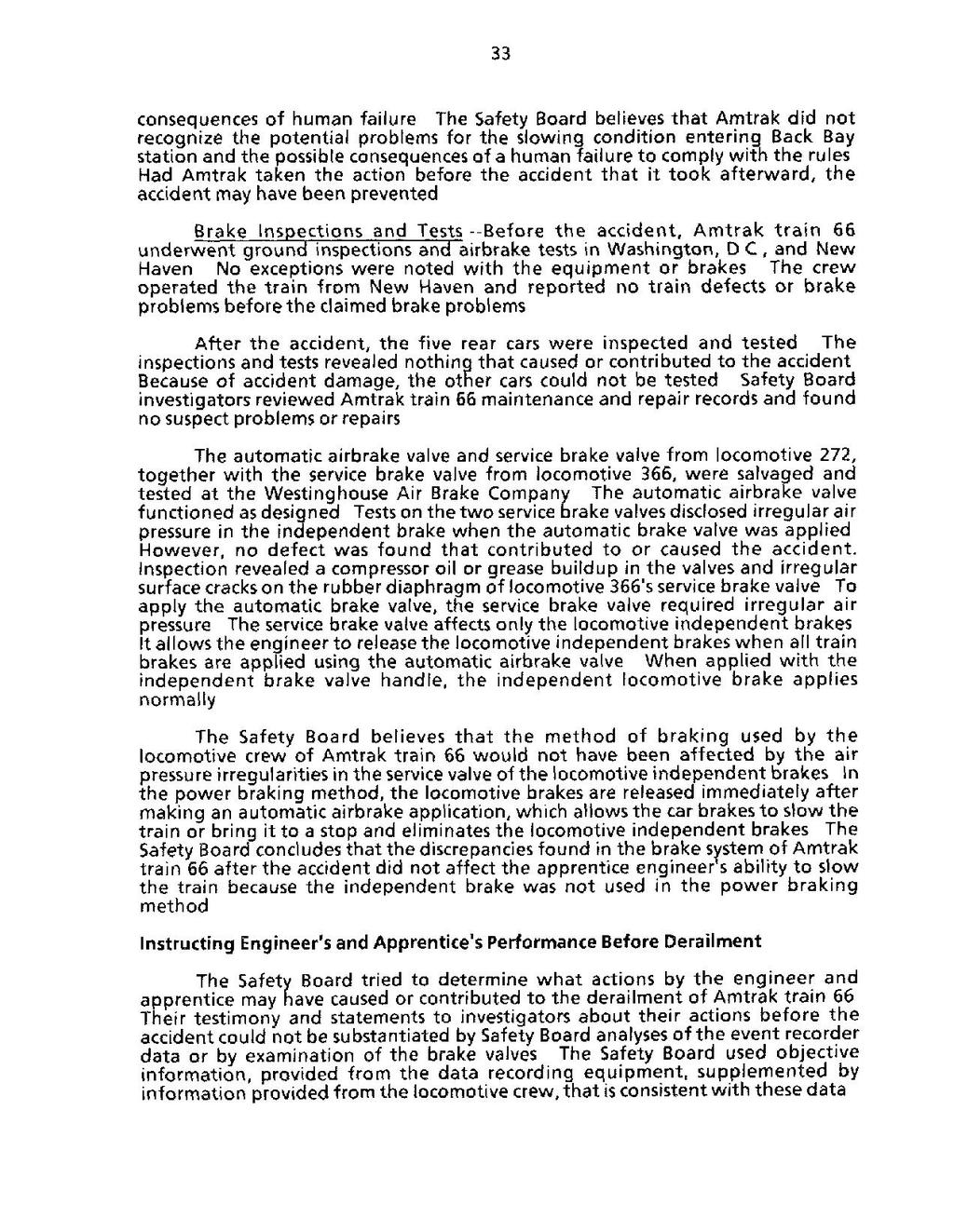33
the consequences of human failure. The Safety Board believes that Amtrak did not recognize the potential problems for the slowing condition entering Back Bay station and the possible consequences of a human failure to comply with the rules. Had Amtrak taken the action before the accident that it took afterward, the accident may have been prevented.
Brake Inspections and Tests—Before the accident, Amtrak train 66 underwent ground inspections and airbrake tests in Washington, D.C, and New Haven. No exceptions were noted with the equipment or brakes. The crew operated the train from New Haven and reported no train defects or brake problems before the claimed brake problems.
After the accident, the five rear cars were inspected and tested. The inspections and tests revealed nothing that caused or contributed to the accident. Because of accident damage, the other cars could not be tested. Safety Board investigators reviewed Amtrak train 66 maintenance and repair records and found no suspect problems or repairs.
The automatic airbrake valve and service brake valve from locomotive 272, together with the service brake valve from locomotive 366, were salvaged and tested at the Westinghouse Air Brake Company. The automatic airbrake valve functioned as designed. Tests on the two service brake valves disclosed irregular air pressure in the independent brake when the automatic brake valve was applied. However, no defect was found that contributed to or caused the accident. Inspection revealed a compressor oil or grease buildup in the valves and irregular surface cracks on the rubber diaphragm of locomotive 366's service brake valve. To apply the automatic brake valve, the service brake valve required irregular air pressure. The service brake valve affects only the locomotive independent brakes. It allows the engineer to release the locomotive independent brakes when all train brakes are applied using the automatic airbrake valve. When applied with the independent brake valve handle, the independent locomotive brake applies normally.
The Safety Board believes that the method of braking used by the locomotive crew of Amtrak train 66 would not have been affected by the air pressure irregularities in the service valve of the locomotive independent brakes. In the power braking method, the locomotive brakes are released immediately after making an automatic airbrake application, which allows the car brakes to slow the train or bring it to a stop and eliminates the locomotive independent brakes. The Safety Board concludes that the discrepancies found in the brake system of Amtrak train 66 after the accident did not affect the apprentice engineer's ability to slow the train because the independent brake was not used in the power braking method.
Instructing Engineer's and Apprentice's Performance Before Derailment
The Safety Board tried to determine what actions by the engineer and apprentice may have caused or contributed to the derailment of Amtrak train 66. Their testimony and statements to investigators about their actions before the accident could not be substantiated by Safety Board analyses of the event recorder data or by examination of the brake valves. The Safety Board used objective information, provided from the data recording equipment, supplemented by information provided from the locomotive crew, that is consistent with these data.
